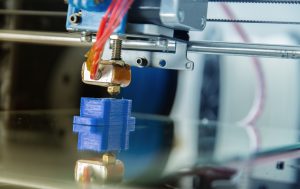Inspection Method for 3D Printed Parts (Part 3)
According to avionics expert Greg Morris from GE Aviation, post-build procedures for 3D printed engine parts take up to 25% of the total production time. Complex inspection processes make it difficult to deliver products quickly and efficiently.
Quality and inspection routines must assess powder quality, take and record dimensional measurements, and use NDT techniques to evaluate the internal and external condition of each part. Due to the natural variations that occur during 3D printing, these steps are essential to producing high-quality engine parts that meet all necessary standards.
Types of Inspection Equipment and Technology

Manufacturers have two choices for testing their 3D printed parts. The first involves taking a sampling from each lot and using those results to represent the entire run. However, this method does not account for the inherent variations in 3D parts. Since many of these methods result in the destruction of the unit, this method cannot be used on all parts. That means manufacturers could be missing a large number of subpar parts.
Non-destructive testing (NDT) inspections are another choice for testing 3D printed parts. These allow each part to be individually inspected. NDT methods ensure the safety, efficacy, and function of 3D printed parts without destroying inventory. These are some of the most commonly used NDT inspection methods:
- Visual inspection
- CT system
- X-ray
- Penetration testing
- Infrared thermography
- Leak or pressure testing for complex structures
- Eddy current
- Mechanical property inspection to measure tensile, yield, shear, and fatigue
- Metallography
- Hardness test
NDT inspections are an important part of many manufacturing processes, especially in the 3D field. NDT lets manufacturers:
- Collect data that allows technicians to track, trace, and evaluate defects and their effect on application performance.
- Monitor melt zones and receive high-speed visual images of defects during the manufacturing process.
- Check part dimensions and detect defects.
- Screen for critical defects that can compromise the performance of the finished product.
NDT testing is a safer and more thorough inspection method when compared to more destructive procedures.
New 3D Manufacturing Inspection Method
At the Manufacturing Technology Centre in Coventry, UK, Dr. Ben Dutton is actively developing Laser Ultrasound technology. In the additives manufacturing sector, this NDT inspection method can be used to evaluate powder beds during directly deposited manufacturing processes. This method is also useful in evaluating components with complex structures.
This new ultrasound application is superior to the traditional camera method. The Laser Ultrasound can penetrate under the top layer of material and detect imperfections that are just below the surface. The traditional camera method is limited to photos of each layer, which leaves manufacturers with blind spots that could harbor potentially fatal flaws. As each new layer of powder is added, these flaws are buried more deeply, which makes them less likely to be found by traditional methods.
NDT Testing with Impro Industries
NDT inspection methods save time and resources for manufacturers. Non-destructive testing methods allow manufacturers to visualize the interior of parts and processes more clearly, which improves outcomes and produces a safer and more efficient product. New testing methods currently in development will further increase the ability to assess processes without damage.
Impro Industries is a global leader in the manufacturing testing field. We work with a diverse group of industries to provide high-precision, high-complexity, and mission critical components for a variety of purposes.
Contact our representatives today for a free consultation on your testing procedures.